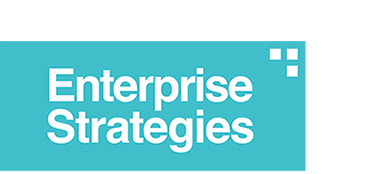
10 Mar The Evolving Roll of Video to Internally Communicate
Historically, video has been carried out by full-time, dedicated teams within large companies. Only CEOs and other executives were deemed worthy of this formal, structured limelight, often delivering uninspired interviews or announcements about organizational changes. Better videos might have featured historic moments in company history or highlights from an event, but even these weren’t really tapping into the full potential of video as an employee engagement tool.
The dawn of YouTube and the flip camera changed everything. Corporate communicators saw flip cams as a way to use video to internally communicate and start discussions. So they provided cameras to everyone, empowering everyone to shoot footage to post to their internal YouTube sites. As a result, three big problems emerged:
1. Employees weren’t posting. People feared possible reprimand for content deemed unsuitable or out of line from what was expected, so they simply didn’t shoot footage for their corporate sites.
2. Shooting and posting were difficult. It takes time to shoot video, but the real time-consuming part comes in editing and sound correction. The general layperson doesn’t have the knowledge and time to do this.
3. Videos weren’t adding value. The people who were shooting footage for their corporate sites were posting unstructured video and too much of it. It wasn’t providing value to the company or its people.
The next evolution of video in enterprise social media — what’s happening now — involves putting cameras in the hands of corporate communicators. These people understand what kinds of stories will “sell” and how to conduct an interview. Video empowers these communicators with another tool to engage audiences. As the power of video in enterprise social media strategies has grown, three big lessons have been learned:
1. Corporate communicators have to embrace the art of storytelling and share those stories.
YouTube is the second most popular search engine on the internet. (You know who holds that top spot.) Videos are meant to tell stories to be shared. Publishing internal stories promotes your culture and creates a deeper relationship with customers, giving them an insider’s view of your company. Your service is no longer just a service. It has a persona, created by the people featured in your videos.
When Con Edison gas operations workers investigating a leak helped break up an altercation, the company recognized the situation as an opportunity. The company posted a video featuring their “Con Edison Heroes” talking about the situation at the scene. Through video, these employees turn into thoughtful heroes in just over one minute. The video has been viewed hundreds of times since January 25, 2012.
When other employees helped a man who had been struck by a bus, again, they became Con Edison Bus Heroes in this video.
Humanizing a job title — giving heart to the lineman, dispatcher, engineer or electrician — shows your external audience that your company and its individuals care about more than just carrying out a job or collecting a paycheck. For your internal audience, employees become part of something bigger. Though they spend most of their day focused on their particular responsibilities, they have a connection to the “heroes” who make up your organization.
2. Production and posting processes must have structure.
Creativity and flexibility are important, but you need guidelines to make your video strategies add value to your company. Define who is responsible for creating content and what kinds of messages you are soliciting (if you are soliciting them). If you are looking for story ideas, let your employees know what kinds of stories you want. Define the review process and submissions standards.
3. Videos must be personal.
Video empowers corporate communicators to humanize just about anything. If you’re a Zappos shopper, you’ve seen how they humanize shoes by having a Zappos employee talk about the shoe on video through the “Larger Image and Additional Views” link. This not only speaks to Zappos acclaimed culture but also engages the external audience. And when Apple introduced new products in the past, it wasn’t through a press release. It was primarily through a person: Steve Jobs.
McGraw-Hill didn’t use a memo or talking head to launch its Employee Giving Campaign last year. The company used its own employees, lots of creativity and video to make it personal and engaging.
To promote McGraw-Hill’s Employee Resource Groups, video was used to show the faces behind these five diversity-focused organizations. They made it personal. Employees considering joining the lack Employees at McGraw Hill or Hispanic Heritage Network can see who is already involved, which humanizes the acronyms of BEAM and HHN. For those Resource Group members, attention to their causes through videos shows that McGraw-Hill takes them seriously.
If you want to explore some cool video-related tools, check out the following links:
- Candidio – provides a cost effective solution to the problem of not having the in-house skill, time or resources needed to professionally edit employee shot videos.
- Epipheo – combines video, animation, storyboarding & humor to visually communicate complex concepts in an easy to understand and entertaining way.
- FastDraw – for the times when you just need to “draw it all out” for your audience.

